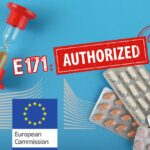
Regulation of nanomaterials at work

What is the legal framework for nanomaterials in the workplace?
By the AVICENN team – Last modification in May 2022
In France
Since January 1, 2013, companies and research organizations must fill out a mandatory declaration of “substances in a nanoparticulate state” manufactured, imported or placed on the market in France, which is added to the r-nano register.
Nearly ten years after its creation, it is high time to add, to the declaration form, data on the number of exposed workers, which public authorities and preventionists currently know little about.
Since 2016, nanos have been included in the Work Health Plan (WHP). The subject of emerging risks and nanomaterials has been included for the first time as a focus area in the PST 3 2016/2020. In the PST 4 2021/2025, several actions concern nanomaterials:
- Action 2.1 provides for better knowledge of occupational exposure and polyexposure to nanomaterials and for toxicological studies on their hazards and impact according to the routes of exposure (particularly the cutaneous route)
- Action 10.2 plans to optimize the monitoring and surveillance of occupational risks (including EpiNano)
However, from a legislative point of view, there are no specific regulations for the protection and safety of workers exposed to nanos1See in particular:
-Afsset, Les nanomatériaux, Sécurité au travail, May 2008
-DGT, Ministère du travail, Plan Santé au travail 2010-2014 (PST2), October 2010
According to the French authorities, there is no “legal vacuum” in that “nanoparticles are covered by all the regulations of the French Labor Code relating to the prevention of chemical risks – in particular the provisions relating to the prevention of risks associated with hazardous chemical agents (HCAs) and, where applicable, those applicable to hazardous chemical agents that are carcinogenic, mutagenic or toxic to reproduction (CMRs) of category 1 or 22Response of the French authorities to the public consultation “Towards a strategic nanotechnology action plan (SNAP) 2010-2015”, March 2010. Nevertheless, the French authorities have recognized that “efforts must be pursued to (…) create regulatory tools of European or even international scope”3Response of the French authorities to the public consultation “Towards a strategic nanotechnology action plan (SNAP) 2010-2015,” March 2010.
If a case of exposure to danger or damage to others were to be referred to a judge, the employer’s legal liability could be invoked on two grounds (if the constituent elements of the offences are met):
- criminal responsibility: the offence of deliberately endangering others (art. 223-1 penal code) or a characterized fault which exposed others to a risk of particular gravity that the author could not ignore (art. 121-3 paragraph 4 penal code)
- civil liability: the employer has caused damage to others; he may be held civilly liable.
At the European level
- The framework directive on the safety and health of workers at work (89/391/EC, the so-called 1989 framework directive) represents the legal framework for the protection of workers at work. It does not contain specific provisions on nanomaterials, but states that the responsibility for the safety and health of workers lies with the employer. It makes appropriate training for workers an element of the employer’s obligations and these provisions should apply to nanotechnology. Employers must ensure that each worker receives adequate and regularly updated health and safety information and training, as well as job-specific instructions.
- Article 10 of the Chemical Agents Directive (98/24/EC) establishes a more detailed framework for health surveillance including requirements for the introduction of individual health and exposure records at national level.
- In its strategic framework for occupational health and safety (2014-2020), the European Union has set itself the challenge of “combating existing and new risks (nanomaterials, biotechnologies…)”4The European Union’s strategic framework for health and safety at work (2014-2020) , European Commission, June 2014, page 7: “Although many new technologies and innovations in work organization have significantly improved the well-being and working conditions of workers, in order to effectively prevent work-related diseases, it is important to anticipate the negative effects of new technologies on the health and safety of workers. New industrially applied technologies involve new products and processes that must be tested and monitored until they are proven to be safe and do not pose a major risk to consumers or workers. Nanomaterials are a good example of this problem, in that they are likely to have unique properties that may require the use of new toxicity testing methods and risk prediction tools to adequately address safety aspects at the product development stage.”.
Any questions or comments? This information sheet compiled by AVICENN is intended to be completed and updated. Please feel free to contribute.
Our information sheets to go further
Upcoming Nano Agenda

- Scientific conference
- 23rd International conference on Advanced Nanomaterials
- From July 23 to July 25, 2025
- Website: www.advanced-nanomaterials-conference.com

- E-learning program: awareness-raising for personnel who come into contact with nanomaterials during research, formulation, production, maintenance, cleaning, upkeep, etc., as well as safety coordinators or engineers, facility managers, heads of laboratories where nanoparticles are handled.
- Organizers: INSTN Grenoble (CEA)
- On the program:
- 1 – Introduction, definition and characteristics of nanomaterials
- 2 – Toxicity of nanomaterials: the state of knowledge
- 3 – Metrology and characterization of nanomaterials
- 4 – Prevention and protection against nanomaterials in the workplace
- 5 – Quiz: assessment of learning outcomes
- The 2-hour course can be viewed for one month from the date of registration.
- Website: https://instn.cea.fr/…risques-lies-aux-nanomateriaux…

- E-learning program: awareness-raising for personnel who come into contact with nanomaterials during research, formulation, production, maintenance, cleaning, upkeep, etc., as well as safety coordinators or engineers, facility managers, heads of laboratories where nanoparticles are handled.
- Organizers: INSTN Grenoble (CEA)
- On the program:
- 1 – Introduction, definition and characteristics of nanomaterials
- 2 – Toxicity of nanomaterials: the state of knowledge
- 3 – Metrology and characterization of nanomaterials
- 4 – Prevention and protection against nanomaterials in the workplace
- 5 – Quiz: assessment of learning outcomes
- The 2-hour course can be viewed for one month from the date of registration.
- Website: https://instn.cea.fr/…risques-lies-aux-nanomateriaux…
This sheet was originally created in July 2015
Notes and references
- 1See in particular:
-Afsset, Les nanomatériaux, Sécurité au travail, May 2008
-DGT, Ministère du travail, Plan Santé au travail 2010-2014 (PST2), October 2010 - 2
- 3
- 4The European Union’s strategic framework for health and safety at work (2014-2020) , European Commission, June 2014, page 7: “Although many new technologies and innovations in work organization have significantly improved the well-being and working conditions of workers, in order to effectively prevent work-related diseases, it is important to anticipate the negative effects of new technologies on the health and safety of workers. New industrially applied technologies involve new products and processes that must be tested and monitored until they are proven to be safe and do not pose a major risk to consumers or workers. Nanomaterials are a good example of this problem, in that they are likely to have unique properties that may require the use of new toxicity testing methods and risk prediction tools to adequately address safety aspects at the product development stage.”






